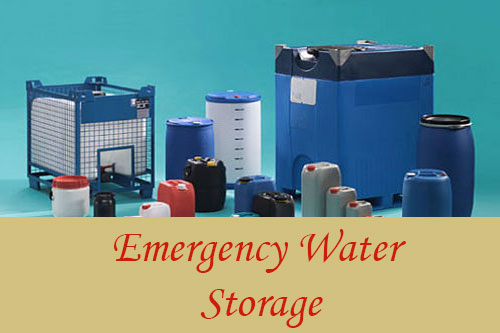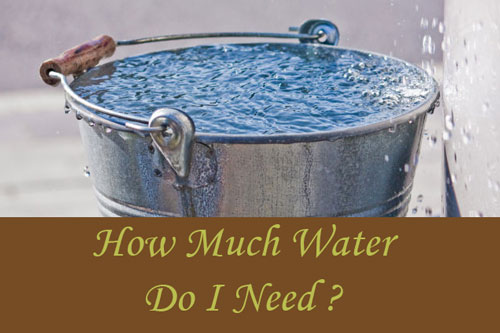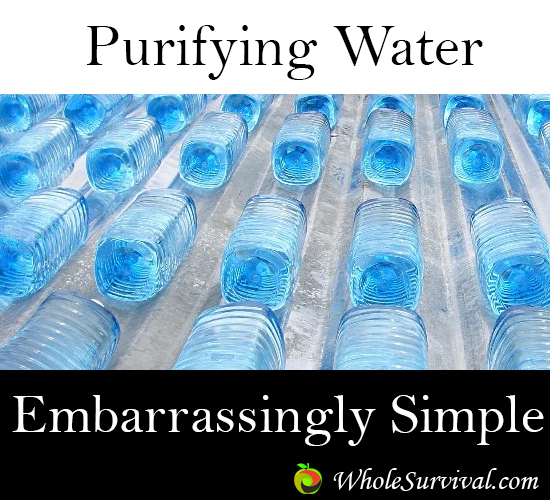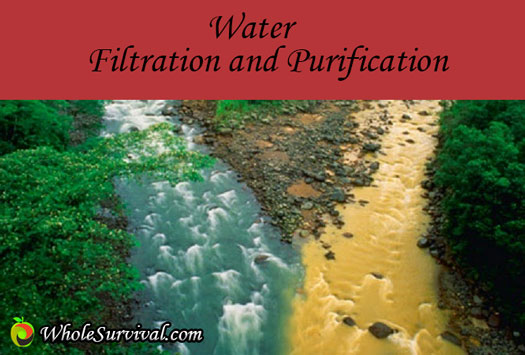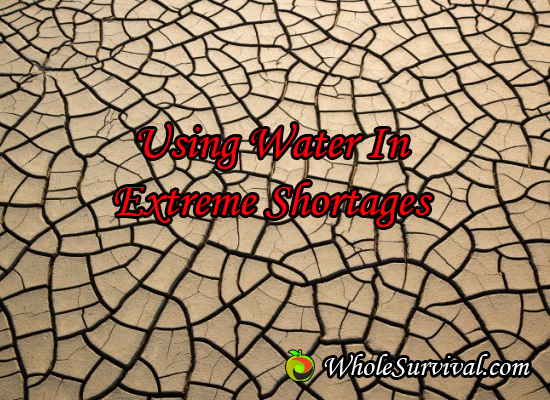Emergency Water Storage – Tanks, Barrels and Bladders
We all know that we need to store at least some water for an emergency. Once you have done the first step and determined how much water you actually need and want to store, you can start thinking about how and where you will want to put that water.
Now, there are plenty of ways to store your water, most of them involving plastic containers of one size or another. But in a nutshell, the difference between what we call a tank, container or barrel is just a matter of size and shape.
There are a number of factors that will help you to determine what might be best for you however, and I’ll go through a number of ideas so that you get the jist of how to store your water properly in the appropriate holding vessel.
Not All Plastic Is Created Equal
Almost all of the storage systems will involve a container made of plastic. Not all plastic is safe to use as a storage container however. You will often see the term ‘food grade’ being used in conjunction with water or food storage. But what exactly makes it different and safer than other plastics?
The simple difference between food safe plastic and non-food safe is the amount of chemical leaching and/or off-gassing that the plastic will exhibit over time. Putting your food or water into a container that may leach chemicals is obviously not a good idea. So how do we know which plastics are safe to use?
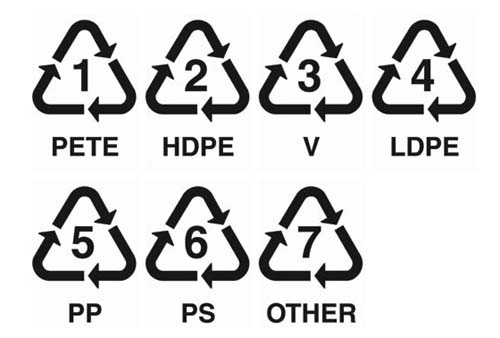
You’ll see one of these numbered symbols on your piece of plastic somewhere. Oddly enough, many food and beverage containers will use a variety of these types of plastics. A good bet is to just stay away from using anything except number 2, or the HDPE plastic. All the others will not be good long term water storage choices.
To make matters more complicated, even the number 2 HDPE (high density polyethylene) plastic may not be safe, not because of the plastic per say, but because an additional chemical agent that may have been used in the molding of the plastic.
Ultimately, there is a way to be able to pick out a safe food/water storage container and that would be one that has a fork and cup on it.

Sometimes food will come in containers that don’t have this marking, but the container is food safe anyway, although you wouldn’t know it otherwise. And sometimes the fork and cup symbol will be found on plastics that are not number 2.
I wish it would be easier to just have a simple way to recognize a food safe container from an unsafe one, but that’s not how things are in the plastic manufacturing world. So to be totally on the safe side, you’ll want a number 2, HDPE plastic with the fork and cup symbol.
All that being said, this information is really for someone trying to save money by using containers that have been used previously. If you are going to be purchasing containers specifically made to be used as a water storage system like the waterbrick, then there would be no worries about the markings.
Do I Have To Use Plastic?
To be honest, I am not a fan of using plastic. I never put plastic in the microwave, even if it indicated that it is safe to do so. I don’t even put my plastic food containers in the dishwasher because I don’t want to heat them up and start to degrade them somehow. So, what other choices do we have to store our water? There are other safe alternatives, like glass or stainless steel but they do have their problems.
Glass of course has its drawbacks, but it is possible to store water this way. The common plastic five gallons jugs that you see at grocery stores also come in glass, and you can still find them at wine or beer making stores. You can even store water in mason jars, or larger pickling jars. They are easy to fill and pour from, you can always see how much is left, they are reusable, and you don’t have to worry about any kind of contamination. Of course, the glass will add to the weight of the water and its much easier to break.
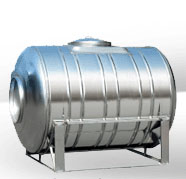
Stainless steel can be another good material choice, if you have lots of money. I’m not talking about those small tote bottles either, you would need hundreds of those to store a large amount of water. I’m talking about large stainless steel tanks used to make beer, or farmer irrigation tanks. Be aware that not all stainless steel is food safe either, and they don’t come with codes like plastic does so you will have to check with manufacturers as to their safety. They do come in all sorts of larger sizes so there is a lot of choice if you can afford it.
Which is Better, Smaller Containers or Large Barrels?
Well, there are two main questions to take into consideration. The first is, how much water do you want to store? And the second is, will you be staying at your location during the emergency? Of course, if space is an issue and you can’t place a water tank outside your residence then there really is no choice but to use smaller containers.
But if space is not a concern, then the first question was explored in a previous post of mine, How Much Water Will You Need. You can refer to that article for a more detailed run through. But to make things simple, if you won’t be storing more than 40 gallons or so, then it’s probably just a better idea to get many smaller containers. Note that, this small amount will be good for minor water disruptions but won’t last very long if a problem has a longer duration past a few days.
If you do have the space and capability of upgrading your water storage to include 55 gallon drums or even larger tanks (sometimes called cisterns), that’s great, but if for some reason you have to leave your residence then know that you won’t be taking that water with you if forced to evacuate. If you have a bug out location somewhere out further away from the city, for example, then that’s where you’ll want to setup your larger longer term storage. In that case you might want to think about having a system in place that includes both larger vessels and smaller portable containers so that you can bring some with you when you have to leave.
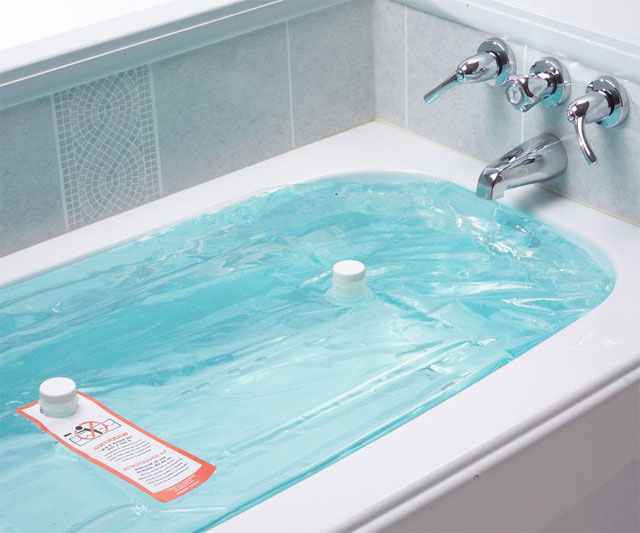
What About Water Bladders?
I’m not a fan of large water bladders. They are basically large plastic bags that you fill with water. They have little shape unless you put them into another rigid container. The picture on the left would be a typical bathtub size bladder which holds about 100 gallons of water.
The problem with this type of storage is that you need to know ahead of time when something might occur. There are few kinds of events that this would be the case. Most times, when the water gets shut off though, it does so without notice. The two situations that I can think of for when it would prove useful would be a hurricane or flooding. Both these weather events give you ample warning before they arrive.
Smaller water bladders however can have some advantages. When not in use, they can be packed away without taking much space, for example in a backpack. Five gallon models also are on the market that are stand alone items, meaning that you can carry them without any other support container.
They Are All Useful Depending On The Situation
Ultimately, any sized barrel, tank or bladder that holds water safely can be useful depending on the situation that you find yourself in. Emergencies come in all sizes as well. Trying to store the most amount of water that makes sense for your household is a smart idea, but having a variety of sizes, from large tanks and drums for long term storage, to portable containers and even water bladders or bags for when your not able to shelter in one place would be the wisest move.

